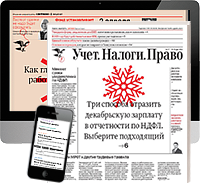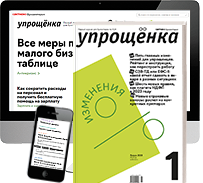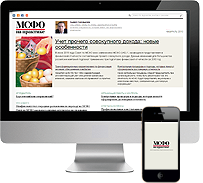Create A Windows Modbus Master Program Using Microsoft .Net
Last updated 7/2021
MP4 | Video: h264, 1280x720 | Audio: AAC, 44.1 KHz
Language: English | Size: 402.01 MB | Duration: 2h 1m
Create your own custom Windows Modbus Master and Basic Human Machine Interface (HMI) using Microsoft .NET programming
What you'll learn
Have an understanding of the Visual Studio 2017 Integrated Development Environment
Create a Windows Forms application
Write VB.NET program code to communicate with a Modbus Server via TCP/IP
Write VB.NET program code to communicate with a Modbus Slave via a Serial Connection
Display data values read via Modbus within the Windows Application
Design user input to allow a user to set data values in a Modbus Server/Slave via the Windows Application
Implement basic graphical objects in the Windows Application for display of data
Build a very basic but custom Human Machine Interface
Requirements
Basic working knowledge of the Modbus RTU protocol.
Familiarity with the installation of software applications on the Windows OS platform
Elementary understanding of the "BASIC" programming language
Description
If you design and implement projects in the area of Process Automation or SCADA, you will know from your experience that "one size does not fit all" when it comes to data acquisition and Human Machine Interfaces (HMIs). There is always some type of customization to be done. Always some feature that the standard HMI software does not offer.
And sometimes, using a very expensive HMI with all sorts of bells and whistles for a small project can just be overkill. There are times when you just need a very simple application that acquires a few data points from a Modbus network and displays them on a computer screen.
These are the reasons for this course!
I teach you how to use FREE TOOLS with some basic programming to create your own Modbus Master application and Human Machine Interface.
If you apply yourself in this course and execute all that I ask you to do, then at the end, you would have a finished Windows Modbus Application that you can customize to your heart's content!
This is the start of your journey into a whole new area of Process Automation / SCADA and one that is increasingly in very high demand!
Looking forward to seeing you on the inside!
Overview
Section 1: Introduction
Lecture 1 Introduction
Lecture 2 Accessing Attached Resources and Setting Optimal Video Resolution
Section 2: Downloading the Software Applications
Lecture 3 Downloading Modsim32 and Virtual Serial Port Kit
Lecture 4 Downloading the EasyModbusTCP .NET library
Lecture 5 Downloading Microsoft Visual Studio Community IDE
Section 3: Quick Start
Lecture 6 The Learning Strategy - Let's Jump In
Lecture 7 Building our first Modbus Master Application - Part 1
Lecture 8 Building our first Modbus Master Application - Part 2
Lecture 9 Building our first Modbus Master Application - Part 3
Lecture 10 The Best Part - Running the Application!
Section 4: Explaining the "Quick Start" Application
Lecture 11 Understanding Properties, Methods and Events
Lecture 12 Examining the Quick Start code - Part 1
Lecture 13 Examining the Quick Start code - Part 2
Section 5: Implementing Polling in our Application using a Timer
Lecture 14 Adding the Timer object and setting it's Properties
Lecture 15 Adding code to the Timer Tick Event and Running the Application
Section 6: Expanding the Application with additional Modbus Read/Write Functions
Lecture 16 Implementing the Read Input Register Command
Lecture 17 Adding more Label Objects for Human Readability
Lecture 18 Implementing the Read Input Status Command
Lecture 19 Implementing the Read Coil Status Command
Lecture 20 Removing the original Button Object
Lecture 21 Implementing the Write Single Register Command
Lecture 22 Implementing the Write Single Coil Command
Section 7: Modifying the Application for Serial Communication
Lecture 23 Setting up Virtual Serial Port and Modsim32 for Serial Communication
Lecture 24 Modifying the Modbus Master for Serial Communication
Lecture 25 Modifying the Code for Multiple Server / Slave Devices
Section 8: Creating a Release Version of the Application
Lecture 26 Building the Application as a Release Version
Lecture 27 Adding a Graphical object to represent an Input Status (Discrete)
Lecture 28 Adding a Graphical object to represent an Input Register (Analog)
Section 9: Bonus Section - How to Always get the Lowest Prices for my Courses
Lecture 29 Bonus Lecture
Electrical Engineers,Electrical Technicians,Electrical Tech or Engineering Students,Process Control Technicians and Engineers,Process Automation Engineers,Programmers working in the Process Automation field
Download link
rapidgator.net:
Код:
https://rapidgator.net/file/34121c51c0544bce270e95113f70add0/jkkiy.Create.A.Windows.Modbus.Master.Program.Using.Microsoft..Net.rar.html
uploadgig.com:
Код:
https://uploadgig.com/file/download/5cb574D401b3dfE4/jkkiy.Create.A.Windows.Modbus.Master.Program.Using.Microsoft..Net.rar
nitroflare.com:
Код:
https://nitroflare.com/view/616EAB7B955F045/jkkiy.Create.A.Windows.Modbus.Master.Program.Using.Microsoft..Net.rar
1dl.net:
Код:
https://1dl.net/mfms2h7w4960/jkkiy.Create.A.Windows.Modbus.Master.Program.Using.Microsoft..Net.rar.html












































